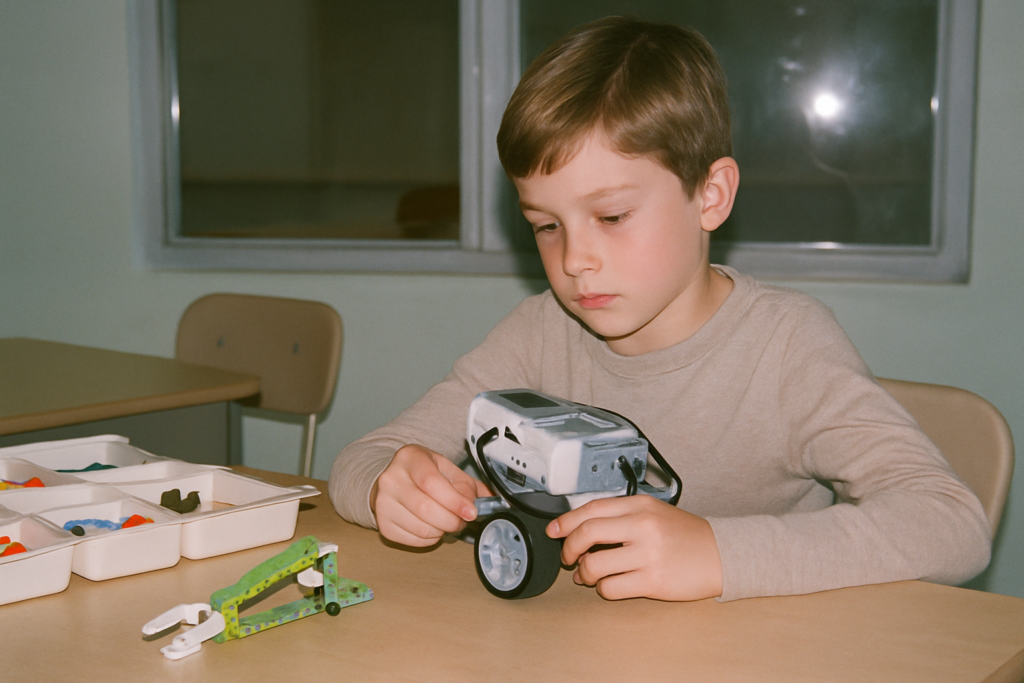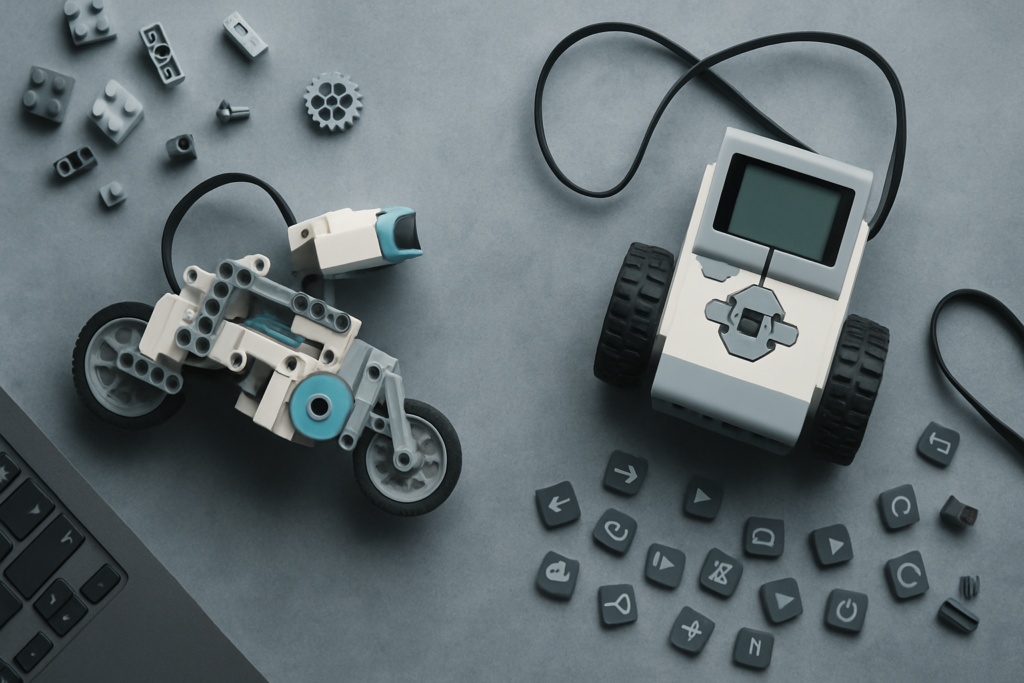Understanding STEM Toys and Their Impact on Learning
STEM toys blend play with educational value, offering children opportunities to develop essential skills in a fun and engaging way.
What Are STEM Toys?
STEM toys, which include items like:
- LEGO sets
- coding robots
- chemistry kits
are designed to promote skills in science, technology, engineering, and math.
These toys foster hands-on learning through interactive components.
They help build critical thinking, enhance problem-solving abilities, and encourage creativity by allowing children to experiment and learn from trial and error.
Popular examples include LEGO Mindstorms, which teaches robotics, and Snap Circuits, which introduces basic electronics.
How STEM Toys Encourage Educational Engagement
STEM toys engage children by making learning interactive and enjoyable. For instance, building a structure with K’NEX requires understanding principles of engineering and physics.
Coding toys like Dash & Dot robots teach programming fundamentals in a playful manner. Such tools capture children’s attention by integrating academic concepts with play. This makes learning not just a task but an enjoyable activity, leading to sustained engagement and deeper understanding.
Exploring the Relationship Between STEM Toys and Gaming
STEM toys help kids develop foundational skills, while modern video games provide a platform to apply and expand these skills. The synergy between these domains is more noticeable as educational values integrate into gaming.
The Integration of STEM Principles in Modern Video Games
Modern video games incorporate STEM principles, making learning engaging and interactive.
Minecraft, for instance, allows players to build complex structures using basic engineering principles. Players use tools like Redstone to create electrical circuits, demonstrating basic electronics concepts.
Games like Kerbal Space Program teach players about physics and orbital mechanics as they construct and launch space missions.
By integrating STEM concepts, these games provide practical applications for lessons learned through hands-on experiences with STEM toys.
Case Studies: Popular Games That Utilize STEM Concepts
Several popular games successfully incorporate STEM concepts.
- Minecraft, with its sandbox environment, encourages creativity and problem-solving by letting players build and program in-game.
- Kerbal Space Program focuses on physics and engineering, requiring players to understand gravitational forces and propulsion to succeed.
- Robot Turtles is a board game that teaches programming fundamentals, reinforcing concepts learned through coding robots.
Each of these games complements traditional STEM toys, offering dynamic and interactive ways to deepen understanding and proficiency in STEM fields.
Benefits of STEM Toys in Developing Key Skills
STEM toys offer significant advantages in nurturing essential skills. They act as building blocks for future proficiency in various fields.
Cognitive Skill Enhancement Through Play
- STEM toys sharpen cognitive skills by encouraging brains to engage in complex tasks.
- LEGO structures or programming a robot, these toys help children develop logical reasoning and spatial awareness.
- Engaging in activities like building circuit boards enhances memory retention, as users must recall steps and procedures.
- Interaction with these toys often demands multidimensional thinking, blending different cognitive processes to achieve desired outcomes.
Fostering Creativity and Problem-Solving
STEM toys fuel creativity by presenting open-ended challenges. Users create unique solutions, such as designing new structures in Minecraft or devising strategies in Robot Turtles.
These toys also promote problem-solving by demanding critical thinking to navigate obstacles. For example, constructing a functional bridge with building blocks requires engineering principles and trial-and-error adjustments.
Encountering challenges teaches perseverance and adaptability, essential traits for innovation.
Choosing the Right STEM Toys for Different Age Groups

Selecting the appropriate STEM toys for children is essential to match their developmental stages and interests. Each age group requires toys that cater to specific cognitive and motor skill levels.
Recommendations for Young Children (Ages 3-7)
Young children benefit from simple, interactive toys that stimulate basic STEM concepts.
For instance, building blocks like LEGO Duplo introduce foundational engineering skills. Activity sets such as Melissa & Doug’s Wooden Building Blocks set also foster spatial awareness and problem-solving.
Additionally, LeapFrog’s LeapStart 3D provides a hands-on experience with books and activities that cover early math and science concepts through engaging play.
Best Picks for Pre-Teens (Ages 8-12)
Pre-teens are ready for more complex toys that challenge their critical thinking and creativity.
Coding kits like Kano’s Computer Kit allow children to build and program their own computers, enhancing their understanding of technology and programming.
Circuit kits such as Snap Circuits offer hands-on experience with electrical engineering principles.
LEGO Mindstorms EV3 introduces robotics and encourages learning through building and coding robots that can perform various tasks.
Advanced Options for Teenagers (Ages 13 and Above)
Teenagers need advanced STEM toys that provide deep dives into specific fields.
Raspberry Pi kits enable teens to create and program their own projects, from simple circuits to complex systems, fostering skills in both hardware and software development.
3D printing pens like the 3Doodler create intricate designs and introduce manufacturing concepts.
Additionally, educational platforms like Arduino offer extensive opportunities for teens to develop and execute their own electronics projects.
Choosing the right STEM toys bridges entertainment and education, ensuring children engage in meaningful play that nurtures future proficiency in STEM fields.



